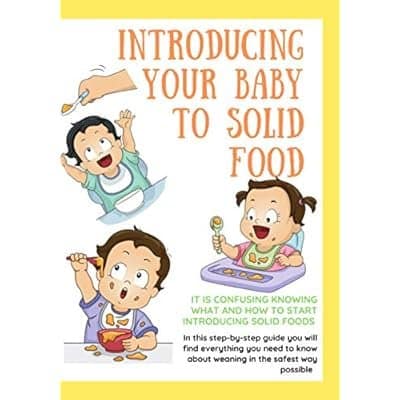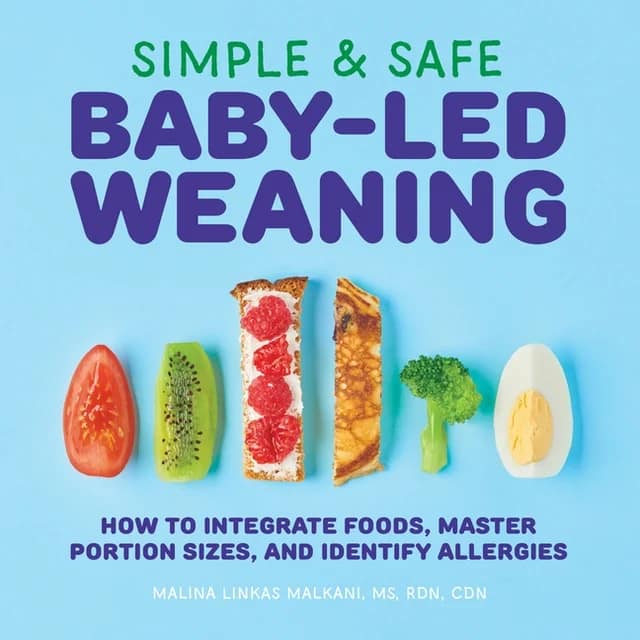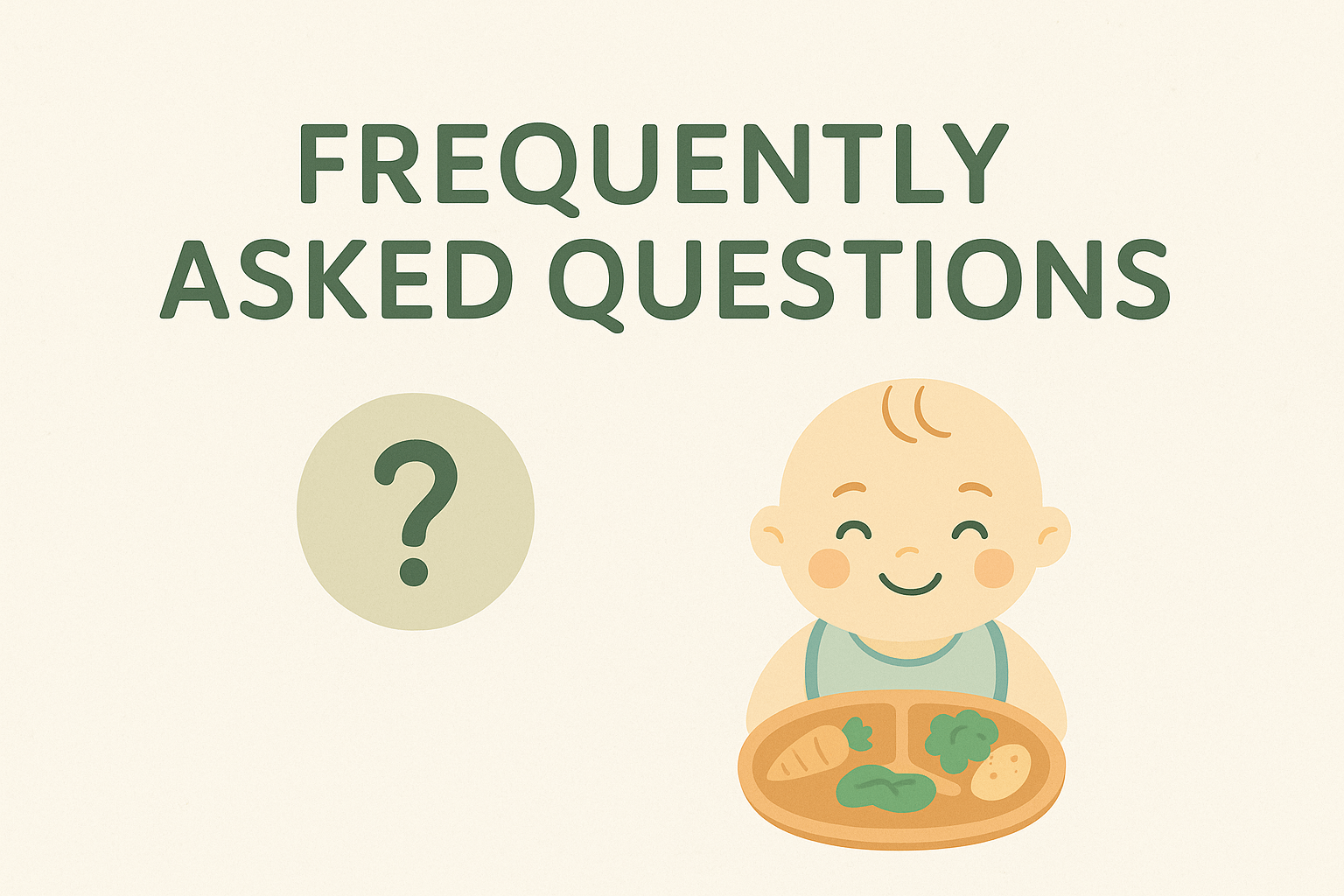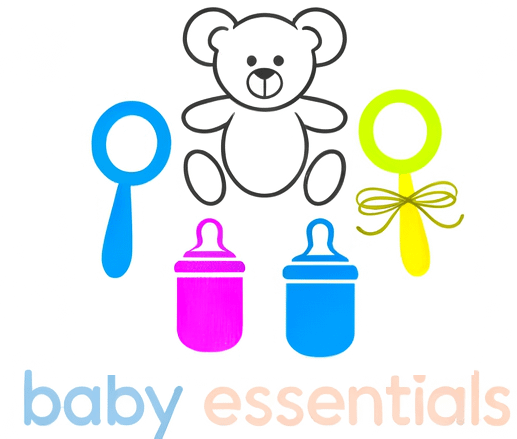Introduction to Recognising the Signs Your Baby is Ready for Solids
Introducing solids to your baby is an exciting milestone in their development. Parents must identify the signs that indicate readiness for this important step. In this article, we will explore the key indicators that your baby is ready for solids and how to approach the transition safely and effectively.
Recognising the Signs Your Baby is Ready for Solids – Understanding Infant Readiness
Understanding when your baby is ready for solids is a significant aspect of parenting that can set the foundation for a positive approach to food and nutrition. Recognising the signs of readiness is essential to ensure that your baby is physiologically and developmentally prepared for this exciting transition. While the typical age range for introducing solid foods is around 6 months, each baby is unique, and readiness can vary based on individual growth and development.
One of the primary physical milestones that indicate readiness for solids is the ability to sit up independently. This skill often begins to develop around 6 months of age. A baby who can sit well with minimal support demonstrates that their core muscles are sufficiently strong to handle the additional coordination needed for eating solids. Sitting upright helps with the swallowing process, allowing your baby to safely manage the introduction of new textures and flavours.
In addition to sitting up, another critical sign of readiness is the ability to maintain head control. An infant ready for solids should be able to hold their head up steadily and turn it away if they are full or uninterested in food. This head-and-neck stability is crucial, as it lays the groundwork for safe swallowing and prevents choking.
Alongside these physical developments, you may observe specific behavioural signs indicating your baby’s readiness to explore solid foods. Showing interest in food is a significant indicator. Parents might notice their little ones reaching for food or watching intently as others eat. This curiosity about mealtime can manifest in various ways, from finger-pointing to open-mouthed expressions when they see food. When your baby is eager to engage with the eating process, this enthusiasm highlights their readiness to expand their palate beyond milk.
Another important sign to watch for is the baby’s ability to express need and desire for nourishment. Around 6 months, many infants exhibit a growing appetite for more than just breast milk or formula. They may take feedings more frequently or appear dissatisfied after a feeding that previously seemed sufficient. Such changes in appetite might be symptomatic of their increased nutritional needs as they undergo significant growth spurts during this developmental phase.
The development of hand-to-mouth coordination is also crucial during the transition to solids. By the age of 6 months, many babies start to demonstrate the ability to coordinate their movements, allowing them to bring objects to their mouth. This skill not only showcases readiness for food but also emphasises exploration in their environment. You may notice your baby attempting to grasp items, such as toys or food offered to them, which is a foundational step in independent eating.
Furthermore, babies are naturally curious beings, and their interest in the foods surrounding them often grows exponentially. It’s common to see them reaching for and attempting to grab food during family meals. Mimicking the actions of older siblings or parents can also indicate their desire to partake in the mealtime experience. When you notice such behaviours, it signals their readiness to join in, exploring the world of solid foods.
While observing these signs, it’s also important to consider your baby’s individual temperament and readiness cues. Some babies may be more cautious while others may push forward enthusiastically. Tailoring your approach to meet your baby’s unique temperament can make the transition to solids a smoother and more enjoyable experience.
As you prepare for this new journey, keep in mind the importance of introducing single-ingredient foods initially. This practice not only helps identify any potential allergies but also allows your baby to get accustomed to individual flavours. Approaching solids with an open mind, flexibility, and an awareness of your baby’s cues will foster a positive relationship with food, paving the way to a lifetime of healthy eating habits.
Overall, the transition to solids is a significant milestone for both you and your baby. By understanding key signs such as the ability to sit up, head control, interest in food, appetite changes, and hand-to-mouth coordination, you can confidently assess when to introduce solid foods. As you approach this exciting phase, be attentive to your baby’s unique development and cues, ensuring a nurturing and supportive experience as they embark on their culinary journey.
Introducing your baby to solid foods: Andreea Dobircianu

Disclosure: As an Amazon Associate, I earn from qualifying purchases. This means that if you click on a link and make a purchase, I may receive a small commission at no additional cost to you.
Recognising the Signs Your Baby is Ready for Solids – Key Signs to Look For
When considering the transition to solid foods, new parents need to recognise specific signs that indicate their baby is ready for this significant dietary shift. Understanding these signs can help you feel more confident in your instincts and your baby’s development, ensuring both a smoother transition and a more satisfactory eating experience. Here, we explore several key indicators that suggest your baby is ready to experience the world of solids.
One of the most prominent signs is an increasing appetite. If you notice your baby consistently finishing their bottle or breastfeeding sessions and still seems hungry shortly afterwards, this may indicate they’re ready to explore more substantial sources of nutrition. Babies at around six months may reach a point where breast milk or formula alone no longer satisfies their nutritional needs. You might begin to see your little one exhibiting signs of frustration during feeding times, such as crying or showing eagerness for more food even after a full feeding. This demonstrated need for increased food intake is often a precursor to solid foods and one of the most straightforward cues to observe.
Another sign to look for is interest in what others are eating. Babies are naturally curious, and as they grow, their attention often shifts toward adult mealtime rituals. You might find your baby watching closely as you eat, reaching for your food, or even trying to grab items from your plate. This newfound fascination with food signifies that they are not just ready for a richer array of flavours and textures but are also starting to understand the social aspects of eating. Pay attention to moments when your baby’s eyes light up at the sight of food or if they attempt to mimic your motions, such as opening their mouth when you do or chewing when they see you eating. Such behaviours indicate they are not only interested in food but are also eager to participate in the experience, making it a prime time to consider introducing solids.
Physical development plays a crucial role in readiness for solids. While most babies will exhibit some of the earlier signs around the six-month mark, each child develops uniquely. Look for signs such as the ability to sit up with minimal support. This skill is essential because it facilitates safe eating; babies need to have a stable core to effectively swallow and manage food. If you notice your baby sitting in a high chair or supported seat, maintaining a straight posture with little to no support, this readiness is a good indicator that they may be prepared to take on solid foods.
Additionally, as your baby becomes adept at hand-to-mouth coordination, you may notice that they can grasp small objects and bring them to their mouth. This skill is often showcased as babies start picking up toys, grasping at your food, or successfully getting their hands to their mouths. This coordination is vital for the transition to solids, as it not only allows them to self-feed but also shows that they are becoming more self-aware and capable of handling food safely.
Beyond physical signs, behavioural cues are also significant. An increased curiosity about food often translates to attempts at communication. If your baby starts vocalising more during meals, making sounds or noises to express interest or excitement when food is present, it’s an exciting sign of readiness. They may also exhibit impatience, fussiness, or heightened attention when they see family members involved in eating. These responses convey eagerness to join in on the mealtime routine, signalling that your baby is ready to explore a new phase of nutrition.
In some cases, parents may also notice changes in their baby’s digestive system. As babies grow, their stomachs can handle more complex food than just milk. If your baby shows interest in the smell of food or seems unfazed by the introduction of new textures in their mouth, like when you offer them things like mashed bananas or pureed vegetables, it can be a reassuring sign that they are ready for this progression. Changes in stool patterns may also accompany this readiness, as their bodies adapt to digest solid food.
While observing these signs, it’s important to remain attuned to your baby’s unique personality and cues. Some babies may show more reluctance initially, while others may dive headfirst into the world of food. Every child is on their own journey, and factors like previous feeding experiences, sensory sensitivities, and individual developmental timelines should be taken into account.
Recognising readiness signs for solid foods is about understanding your baby’s physical, emotional, and behavioural cues. From increasing appetite to demonstrated curiosity in your meals, these signs will guide you in making an informed decision about when to introduce solids. As your baby evolves into this new developmental stage, it offers a wonderful opportunity for bonding during mealtimes and laying the foundation for healthy eating behaviours in the future. You’ll find that the experience can be both rewarding and enlightening as you watch your baby discover the vast world of flavours and textures that await them.
Recognising the Signs Your Baby is Ready for Solids – Safe Practices for Introducing Solids
As you embark on the journey of introducing solids into your baby’s diet, it’s essential to prioritise safe practices that will not only ensure your child’s well-being but also maximise the nutritional benefits of this exciting new milestone. The transition from exclusive breastfeeding or formula feeding to solids is filled with opportunities for exploration and development, but it also requires a thoughtful approach to avoid risks associated with choking and food allergies.
One of the first steps in introducing solids safely is selecting appropriate food choices. This involves understanding which foods are best for your baby’s developmental stage. Typically, single-grain cereals, pureed fruits and vegetables, and finely mashed foods are excellent starting points. Opt for iron-fortified cereals, as iron is crucial for your baby’s growth and development. When choosing fruits and vegetables, consider those that are easy to digest and low in allergens, such as bananas, avocados, sweet potatoes, and apples. As you gain confidence in your baby’s ability to handle solids, gradually introduce more diverse foods, including proteins like pureed meats and legumes.
Ensure each food you offer is age-appropriate, well-prepared, and free from added sugars and salts. During the early stages of introducing solids, it’s advisable to practice the “three-day rule.” This means introducing one new food at a time and waiting three days before adding another. This approach allows you to monitor your baby for any signs of allergic reactions, such as rashes, vomiting, or changes in stool consistency. If an allergic reaction occurs, consult your paediatrician before proceeding with further introductions.
The meal environment also plays a crucial role in the introduction of solids. Creating a comfortable and safe space helps not only establish positive associations with eating but also encourages your baby to explore new tastes and textures. Make mealtimes relaxed; avoid distractions such as screens or loud noises, as these can detract from your baby’s focus during this critical learning stage. Being present and engaged during meals offers you the chance to model healthy eating behaviours.
Furniture designed for safety is another consideration. Use a high chair that is stable and properly supports your baby’s posture, allowing them to sit upright. An upright position is not only safer, but it also promotes better swallowing. A strap system can add further safety, ensuring your baby remains securely in place while they explore their new foods.
Texture familiarity is a key component of this process. Early on, offering purees allows your baby to adjust to the concept of swallowing solids. As they progress, gradually introduce a variety of textures to enhance their oral motor skills. Mashed foods, soft-cooked vegetables, and small, soft pieces of finger foods can foster exploration and learning about different textures. Engaging with various textures helps develop the muscles necessary for eventual chewing. Remember, it’s not just about nutrition; this phase is a critical time for developing your baby’s senses and experiences with food.
Encouraging self-feeding is another important practice during this transition. As your baby becomes accustomed to handling food, it’s beneficial to let them grasp pieces of soft foods. This promotes independence and skill-building, while also adding an element of fun to mealtime. Keep in mind that some mess is an intrinsic part of this learning experience; embrace it!
Additionally, be vigilant about hygiene and food safety practices while preparing solids. Always wash your hands before preparing your baby’s meals, and ensure that all utensils, equipment, and surfaces are clean. Freshness is vital; store any leftover food in proper containers and adhere to recommended storage guidelines to avoid foodborne illnesses.
In a similar vein, pay close attention to choking hazards. Foods should be served in sizes and shapes appropriate for your child’s developmental stage. Avoid hard, small, round items like whole grapes, nuts, or popcorn until your child is older and better equipped to manage these textures. Foods should be cut into small, manageable pieces, and tougher items should be well-cooked and finely shredded or mashed.
During this new phase, continuously observe your baby’s cues and willingness to engage with solid foods. Every baby develops at their own pace, and while some may take to solids right away, others may need more time to adjust. Refusal to eat certain foods does not necessarily imply an aversion; rather, it may reflect their innate desire to explore, test, and learn.
Lastly, remember that introducing solids is an opportunity for shared family moments. Consider incorporating your baby’s meals into family mealtimes to foster a sense of belonging and community. Engaging in meals together not only reinforces social skills but also creates rich learning experiences as your baby watches older siblings and parents enjoy their food.
Approaching the introduction of solids with care and intention will help lay the foundation for healthy eating habits in your child. Emphasising safety through proper food choices, a nurturing meal environment, and an array of textures and flavours can transform this milestone into an enjoyable adventure for both you and your baby.
Simple & Safe Baby-Led Weaning: Malina Malkani

Disclosure: As an Amazon Associate, I earn from qualifying purchases. This means that if you click on a link and make a purchase, I may receive a small commission at no additional cost to you.
Navigating the Transition: Baby-led Weaning vs. Traditional Spoon Feeding
As parents navigate the transition to solid foods, a critical decision lies in selecting the appropriate method for introducing them: baby-led weaning or traditional spoon feeding. Both approaches are popular among parents, yet they present distinct philosophies and practices that can significantly impact a baby’s experience with solid foods. Understanding the nuances of each method is essential in making an informed choice that aligns with the baby’s readiness and the family’s preferences.
Baby-led weaning (BLW) is a method that emphasises allowing the baby to self-feed and explore food at their own pace. Rather than spoon-feeding purees, parents provide whole pieces of soft, appropriately-sized food for the baby to grasp, chew, and manipulate. This approach can encourage babies to engage actively in mealtimes, fostering independence and confidence in their ability to feed themselves.
One of the primary benefits of baby-led weaning is that it can help develop a baby’s fine motor skills. Grasping and bringing food to their mouth requires dexterity, which enhances hand-eye coordination. Furthermore, by allowing babies to decide how much they eat and which foods they prefer, BLW can promote a healthy relationship with food from an early age. Babies often exhibit preferences when choosing foods, which can lead to favourable eating habits as they grow. Additionally, exposure to various textures and flavours in solid foods during the BLW process can help develop a more adventurous palate, reducing the likelihood of picky eating later on.
However, baby-led weaning is not without its challenges. Parents might find it surprising to watch their child explore food in a way that often leads to messiness. This approach may require additional preparation, as parents need to ensure that all food is cut appropriately to avoid choking hazards and that it is cooked sufficiently to be safe for the baby to handle. Supervision during meals is crucial, and parents may feel anxious about their child’s safety, especially in the early stages of this approach. Not all babies may immediately take to this method either; some may feel overwhelmed or frustrated by self-feeding, making it crucial to remain flexible and patient.
Traditional spoon feeding, on the other hand, involves parents placing pureed or mashed foods directly into the baby’s mouth using a spoon. This method provides more control over the portions and types of food introduced. Many parents feel reassured knowing exactly how much their baby is consuming, and the process often leads to less mess compared to BLW. Spoon feeding can also be a more structured way of introducing solids, allowing parents to monitor their baby’s dietary intake vigilantly.
The benefits of traditional spoon feeding include the potential for more manageable mealtime clean-up and faster introduction to specific flavours and nutrition. For parents who are concerned about allergies or the proper nutrition for their baby, spoon feeding can serve as a more systematic approach to track what foods have been introduced and when. Furthermore, as some babies are more receptive to smoother textures than whole foods, spoon feeding may be easier for certain infants who are not yet accustomed to chewing.
Yet, traditional spoon feeding also has its drawbacks. It may inadvertently create a reliance on the parent for food, which can delay the baby’s learning opportunities for self-feeding and independence. While babies may initially consume foods offered to them, this method might limit their ability to gauge their hunger cues and make choices about what they consume. Additionally, more flavours and textures may be introduced more slowly when relying predominantly on pureed foods, potentially making the transition to lumpier or more diverse foods more challenging later on.
When it comes to selecting the best approach, parents should consider several factors, including their baby’s readiness, personality, and family dynamics. If a baby shows interest in foods, reaches out for them at mealtimes and demonstrates the ability to sit upright and grasp items, they may be well-suited for baby-led weaning. On the other hand, if the baby appears overwhelmed by the idea of self-feeding or if parents are uncomfortable with the mess associated with BLW, gradual spoon feeding could be the preferred choice.
Additionally, family preferences play a significant role. For instance, if everyone in the household adheres to specific meal times or is used to more structured eating patterns, traditional spoon feeding could fit better into the daily routine. Conversely, families who value the messier, more interactive aspect of BLW or those with older siblings already engaged in self-feeding might lean toward the baby-led weaning method.
Ultimately, there is no one-size-fits-all solution when it comes to introducing solids. Many families find success in incorporating elements from both approaches, offering pureed foods alongside soft finger foods to provide the benefits of both methods while catering to their child’s preferences and developmental readiness. Regardless of the selected approach, the key lies in fostering a positive and engaging mealtime experience that encourages exploration, gradual acceptance of new foods, and the development of healthy eating habits.
Overall, whether parents choose baby-led weaning or traditional spoon feeding, the underlying goal remains the same: to provide nutritious foods that support their baby’s growth and development. Understanding the signs that indicate an infant’s readiness for solids, along with a thoughtful approach to introducing various textures and flavours, sets the foundation for a joyful culinary journey that stretches well beyond infancy. Each family will create their own unique mealtime rhythm, blending the philosophies that resonate with their values and lifestyle as they guide their child into the world of solid foods.
Conclusion
In conclusion, recognising when your baby is ready for solids is essential for their growth and nutritional needs. By observing their signs of readiness and following safe practices, parents can ensure a positive and healthy introduction to solid foods, fostering a love for diverse flavours and textures.

Frequently Asked Questions About Recognising the Signs Your Baby is Ready for Solids
What age should I start introducing solids to my baby?
The typical age range for introducing solid foods is around 4 to 6 months, though current medical consensus has shifted toward recommending around 6 months as the standard. Each baby is unique, and readiness can vary based on individual growth and development rather than strict age guidelines. It’s important to look for developmental signs of readiness rather than relying solely on age.
What are the main physical signs that my baby is ready for solids?
The primary physical indicators include the ability to sit up independently or with minimal support, demonstrating that core muscles are sufficiently strong for safe eating. Your baby should also maintain steady head and neck control while seated, allowing them to turn their head away if full or uninterested in food. Additionally, hand-to-mouth coordination is crucial – babies should be able to grasp objects and bring them to their mouth.
How do I know if my baby is showing interest in food?
Behavioural signs include your baby watching intently as others eat, reaching for food during family meals, or showing curiosity about mealtime activities. You might notice finger-pointing, open-mouthed expressions when they see food, or attempts to grab items from your plate. When babies exhibit enthusiasm and eagerness to engage with the eating process, this highlights their readiness to expand their palate beyond milk.
What does an increased appetite look like in babies ready for solids?
Around 4 to 6 months, many infants exhibit a growing appetite that breast milk or formula alone cannot satisfy. They may take feedings more frequently, appear dissatisfied after a feeding that previously seemed sufficient, or show signs of frustration during feeding times. These changes in appetite are often symptomatic of increased nutritional needs during significant growth spurts.
What foods should I introduce first, and how should I do it safely?
Start with single-grain cereals, pureed fruits and vegetables, and finely mashed foods, with iron-fortified cereals being excellent starting points. Choose foods that are easy to digest and low in allergens, such as bananas, avocados, sweet potatoes, and apples. Practice the “three-day rule” by introducing one new food at a time and waiting three days before adding another, allowing you to monitor for allergic reactions.
What’s the difference between baby-led weaning and traditional spoon feeding?
Baby-led weaning emphasises allowing babies to self-feed and explore whole pieces of soft, appropriately-sized food, fostering independence and developing fine motor skills. Traditional spoon feeding involves parents placing pureed or mashed foods directly into the baby’s mouth, providing more control over portions and types of food introduced. Many families find success incorporating elements from both approaches to cater to their child’s preferences and developmental readiness.
What safety precautions should I take when introducing solids?
Create a safe eating environment using a stable high chair that supports proper upright posture, with strap systems for security. Always supervise mealtimes and avoid choking hazards by serving foods in appropriate sizes and shapes for your child’s developmental stage. Maintain proper hygiene by washing hands before meal preparation and ensuring all utensils and surfaces are clean. Avoid hard, small, round items like whole grapes, nuts, or popcorn until your child is older and better equipped to manage these textures.
Moon and Rue: Baby-Led Weaning Made Easy

Disclosure: As an Amazon Associate, I earn from qualifying purchases. This means that if you click on a link and make a purchase, I may receive a small commission at no additional cost to you.
Further Reading
- Exploring Baby-Led Weaning and Traditional Spoon-Feeding
- Baby Food Allergies: Symptoms and Prevention
- Introducing Solid Foods: A Month-by-Month Guide
- Baby Milestones: What to Expect in the 1st Year
Recognising the Signs Your Baby is Ready for Solids Podcast
References and Sources
Primary Health Organisation Guidelines
NHS (National Health Service)
- NHS Start for Life. “How to start weaning your baby.” NHS, 2025. Available at: https://www.nhs.uk/start-for-life/baby/weaning/how-to-start-weaning-your-baby/
Mayo Clinic
- “Mayo Clinic Staff. “Solid foods: How to get your baby started.” Mayo Clinic, May 31, 2024. Available at: https://www.mayoclinic.org/healthy-lifestyle/infant-and-toddler-health/in-depth/healthy-baby/art-20046200
Nemours KidsHealth
- “When Can My Baby Start Eating Solid Foods?” Nemours KidsHealth, August 27, 2024. Available at: https://kidshealth.org/en/parents/solid-foods.html
Pediatric and Nutrition Organisations
Children’s Hospital of Orange County (CHOC)
- “Baby-led weaning vs. spoon-feeding: Which is best?” CHOC, March 21, 2025. Available at: https://health.choc.org/baby-led-weaning-vs-spoon-feeding/
Raising Children Network (Australia)
- “Introducing solids: why, when, what & how.” Raising Children Network, October 10, 2023. Available at: https://raisingchildren.net.au/babies/breastfeeding-bottle-feeding-solids/solids-drinks/introducing-solids
Specialised Feeding Resources
Solid Starts
- “Readiness for Babies to Start Solid Food.” Solid Starts, October 4, 2022. Available at: https://solidstarts.com/readiness/
National Childbirth Trust (NCT)
- “Introducing your baby to solids.” NCT, June 8, 2011. Available at: https://www.nct.org.uk/information/baby-toddler/feeding-your-baby-or-toddler/introducing-your-baby-solids
BabyCentre UK
- “How can I tell if my baby is ready for solids?” BabyCentre UK, July 12, 2022. Available at: https://www.babycentre.co.uk/x1051544/how-can-i-tell-if-my-baby-is-ready-for-solids


